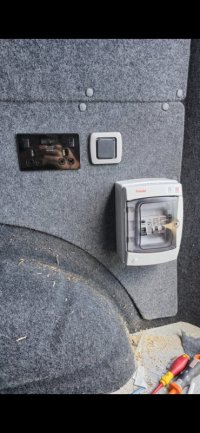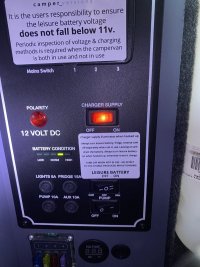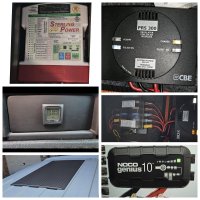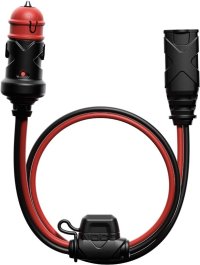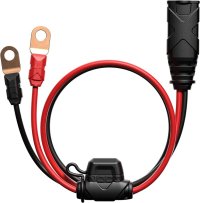You'll get 2 connectors on quick connect sockets - one with clamps one with eyelets.
Looking at your picture a potential is to connect the negative to the negative bus bar and use one of the spare ways in your fuse box for the positive to ensure it's fused. You'd need to crop off the eyelet and crimp on a standard blade connector to do that. You'd also want to cable tie the cable to something solid so you don't put any strain on the connections.
If you were wiring permanently I'd say wire the 240v side in, but for now it may be more flexible to leave it as a plug so you can also use it to top up the starter if you wanted, so long as that works where your 240v sockets are?
Looking at your picture a potential is to connect the negative to the negative bus bar and use one of the spare ways in your fuse box for the positive to ensure it's fused. You'd need to crop off the eyelet and crimp on a standard blade connector to do that. You'd also want to cable tie the cable to something solid so you don't put any strain on the connections.
If you were wiring permanently I'd say wire the 240v side in, but for now it may be more flexible to leave it as a plug so you can also use it to top up the starter if you wanted, so long as that works where your 240v sockets are?

